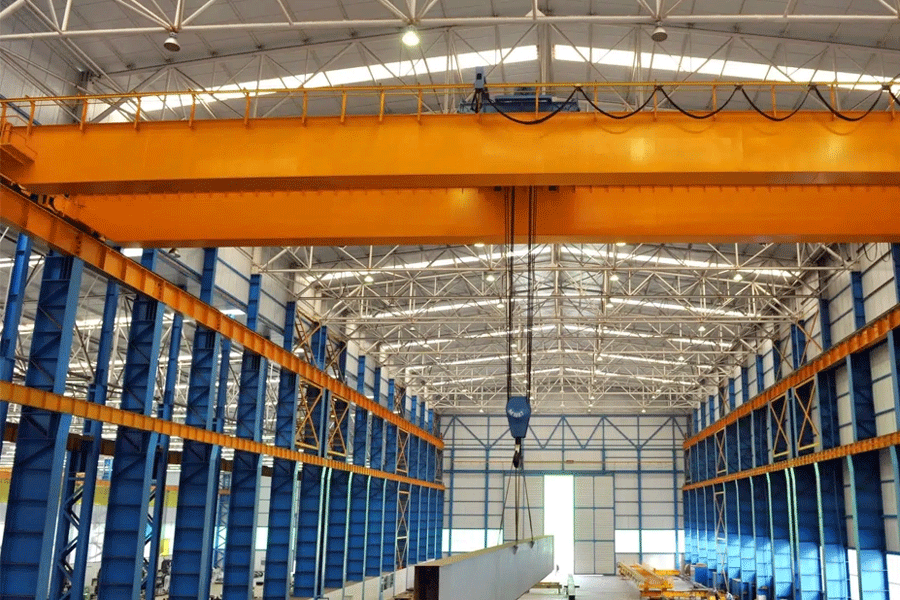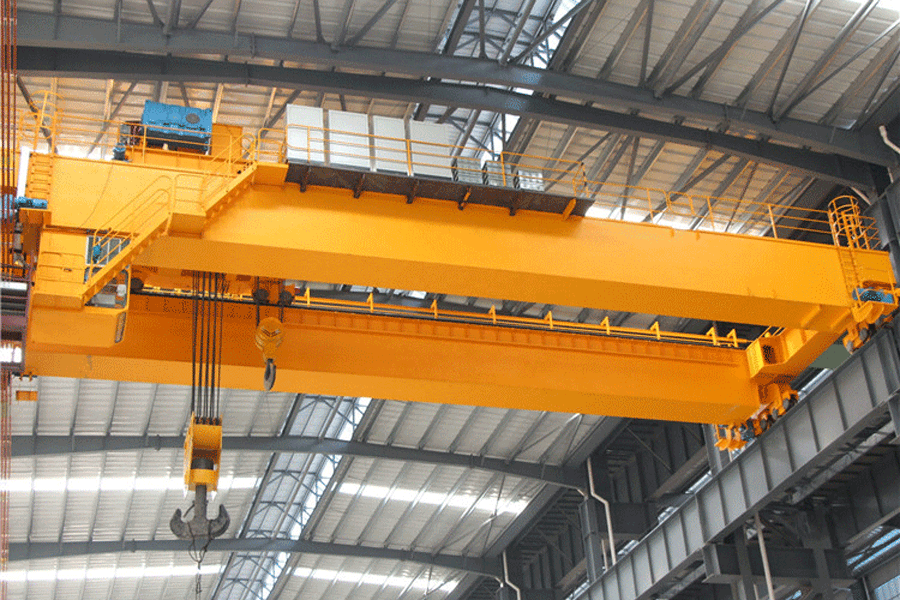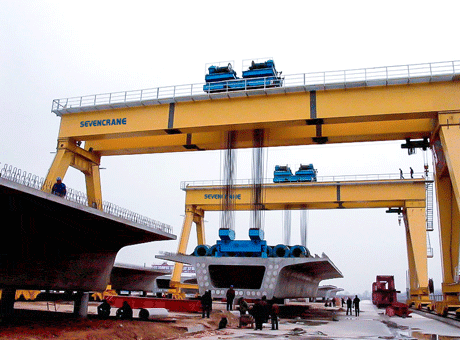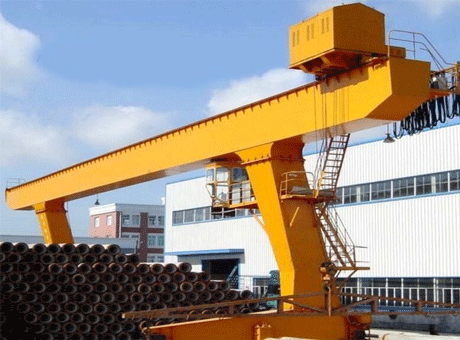Bridge crane is a lifting equipment that is placed horizontally over workshops, warehouses and yards for lifting materials. Because the two ends of the bridge crane are located on tall cement columns or metal supports, and are shaped like a bridge, they are commonly called bridge cranes. It is a kind of lifting machinery with wide range of use and large quantity.

Bridge cranes are important tools and equipment for mechanizing and automating the production process in modern industrial production and lifting transportation. They can reduce the labor intensity of operators and improve productivity. Bridge cranes are widely used in industrial and mining enterprises, steel and chemical industries, railway transportation, ports and terminals, logistics turnover and other departments and places. It is an indispensable piece of equipment in people’s production activities.
There are many types of bridge cranes, among which general bridge cranes and gantry cranes are more common. The structures and operating methods of these two types of cranes are basically the same. The difference lies in the position of the trolley running track. The general bridge crane is at high altitude. The gantry crane is on the ground, which brings about different support structures.
Although there are different types and models of bridge cranes, with differences in appearance and structure, they all have one thing in common, which is the intermittent working method. A working cycle process generally includes: displacing the material through the lifting and lowering of the fetching device, and then moving in the opposite direction to return to the original position or another position for the next working cycle. There is usually a short pause between the two work cycle processes. It can be seen that when the bridge crane is working, each mechanism is often in alternating motion states of starting, running, braking, and forward and reverse phases. In addition, bridge cranes also have the following working characteristics:

1. Hoisting machinery usually has a huge metal structure and a relatively complex mechanical structure. It can complete one lifting, lowering or several horizontal movements. During the operation, there are often several movements in different directions at the same time, which is technically difficult.
2. The materials to be hoisted are diverse, and the load also changes, ranging from dozens of tons to hundreds of thousands of tons, and as light as tens of kilograms. The lifting height is also different, ranging from tens of meters to less than 1 meter. The lifted items are also irregular in shape, as well as granular, hot-melt, and flammable and explosive items, making the lifting work complicated and dangerous.
3. Most crane equipment needs to operate within a large range, and some are equipped with rails, steel wheels or tire-type crawlers, which have large space for movement and large danger surfaces.
4. There are many exposed moving parts, which are often in direct contact with lifting personnel (such as hooks and ropes).
5. The working environment is complex. There are lifting equipment in operation in industrial and mining enterprises, ports, construction sites and other places. The operation will also encounter dangerous factors such as high temperature, high pressure, flammable, explosive, power transmission lines, strong magnetic fields, etc. These adverse conditions are detrimental to both people and equipment.
6. Operations often require human cooperation and are quite difficult. Operators and commanders are required to cooperate, collaborate and take care of each other skillfully. Operators should have the ability to deal with on-site emergencies.
With the rapid development of modern industry and the continuous advancement of science and technology, some new changes and new features have appeared in the structural design and degree of automation of the bridge type.
For example, in terms of structure, domestic lifting equipment uses computer optimization design to improve the mechanical performance of the crane and reduce its own weight. In terms of performance, we continue to introduce advanced foreign technologies and adopt novel energy-saving speed regulation systems, such as thyristor cascade open-loop or closed-loop systems, with a speed regulation ratio of up to 1:30. As the requirements for speed regulation increase, frequency conversion speed regulation systems and microcomputer control technology have also been applied in cranes.
In short, with the rapid development of science and technology, various advanced domestic electrical control and mechanical technologies are gradually being applied to cranes. Bridge cranes are becoming more and more automated, their structures are becoming simpler, their performance is more reliable, their lifting capacities are getting larger and larger, and their varieties are becoming more and more complete.





















